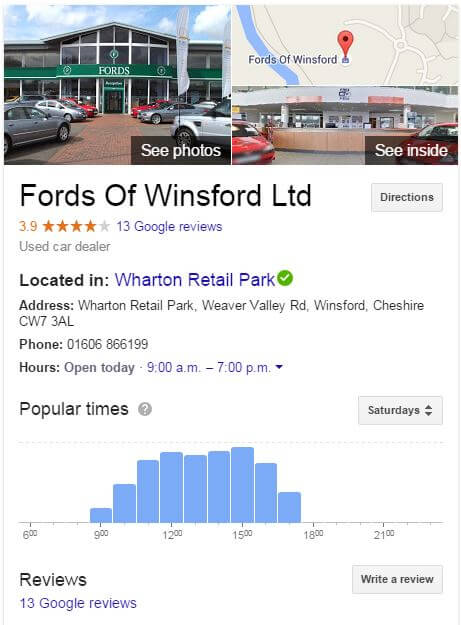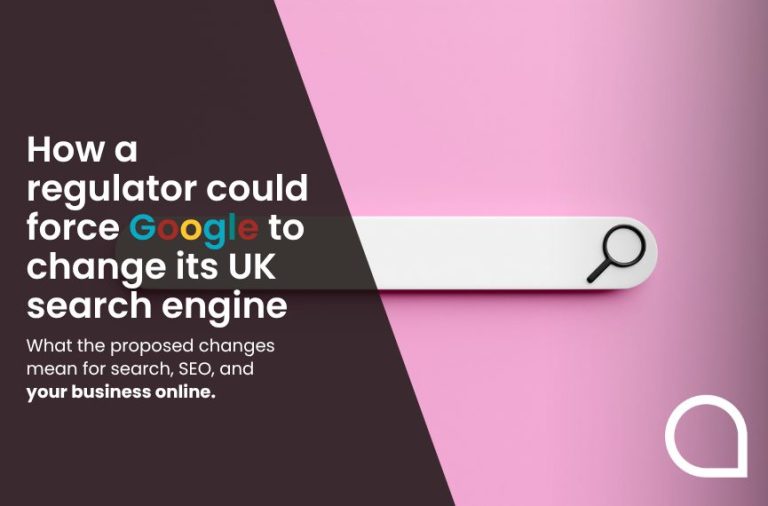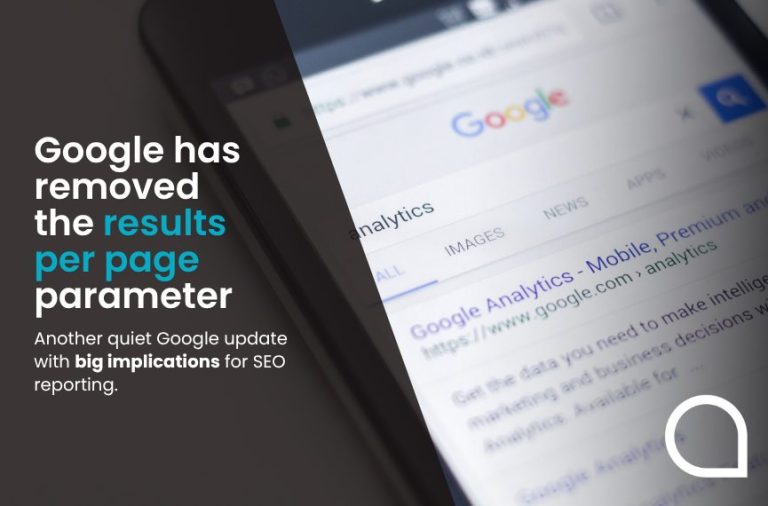This week we have noticed an addition to some of the Google My Business pages whilst searching and that is the ‘Popular Times’ graph.
The idea is simple in that they are supposed to give users a guide to how busy a location is going to get at any time of the day and to therefore base their decision on whether to visit or not on this data. This was first reported in the USA in July but appears to have taken a bit longer to start showing up in the UK.
In theory this sounds fine however there are a couple of points to note from the details of the release which were reported on Mike Blumenthal’s site. He reported the following;
Q: Is this available Internationally?
A: Yes; this will be available in all locales.
Q: Will this feature be available for all mobile carriers?
A: Yes, this feature is available for all mobile phones with an internet connection on modern mobile browsers and Android GSA, regardless of carrier.
Q: When will this feature be available in the Google App on iOS?
A: As of now, this feature is available on Android devices and a number of browsers, including Safari and Chrome.
Q: What types of features are associated with this launch?
A: This launch lets users see historical trends of how busy a place gets throughout the week.
Q: Where does Google get this data from?
A: The information is based on anonymized and aggregated visits to places from Google users who have opted-in to storing location data.
Q: Is Google tracking my location and saving it for this feature?
A: No. The information is completely anonymous and users must opt-in to store location data.
Q: What can businesses do if they don’t want the business data to show for their business?
A: We do not offer a way for businesses to remove this information. We believe this information is valuable for customers in deciding when and where to go.
Q: What types of places will this information show for?
A: This information shows for places where users are commonly worried about how busy it typically gets. Data will show up for locations with regular foot traffic and a local listing on Google Maps.
 There are a number of issues arising from this which businesses should be aware of.
There are a number of issues arising from this which businesses should be aware of.
Firstly there is no data methodology given regarding this data. We don’t therefore know if it is based on absolute numbers or relative numbers. We also can’t tell which data sources are really being used to compile this data. So for example it shows that Fords of Winsford get really busy around 3pm on Saturday, but there is no correlation between ‘busy’ and ‘capacity’. So if FoW has more than enough staff to cope at that time should a user put off their visit because the graph shows they might be busy?
Secondly, it bases this on generic day to day data but of course, cannot cope with Public Holidays, which by definition are exceptional data days and may well mean the graph is wrong for a Bank Holiday Monday.
Thirdly, it seems to be compiled from “anonymized and aggregated visits to places from Google users who have opted-in to storing location data”, but that will only give a partial picture and is in all likelihood going to be heavily weighted towards the ‘always on’ generation. If a business serves predominantly the 40+ market then there is a good chance that this data could be wrong.
Finally, the penultimate question is the real killer. It appears that “We do not offer a way for businesses to remove this information.” is actually saying we are right and you are wrong. Even if the data is incorrect and actually drives business away from your establishment, Google will do nothing about it.
That needs to change as there are so many examples of where Google is wrong; just look at any of the knowledge graph examples we have reported and it becomes evident that Google is just a machine. And it will make mistakes.
What do you think? Is this a good thing and these fears unfounded or do you worry about the lack of transparency and ability to correct incorrect data?





